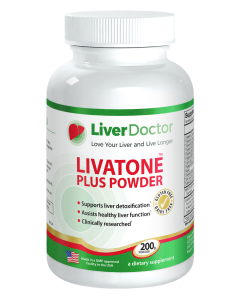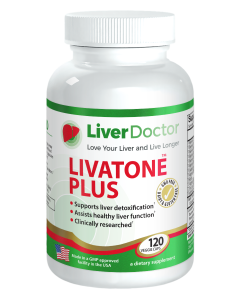
Articles
Essential Reading
Fatty Liver
Liver & Gallbladder Health
Remember it’s important to get an accurate diagnosis because –
Fatty Liver - The Facts Explored Part 4
How can you find out if you have fatty liver?
Your doctor can order various tests:
1. An Abdominal Ultrasound scan will reveal the shape, size and texture of your liver. This test is an accurate method to diagnose fatty liver and is not invasive or painful, nor does it expose you to harmful ionizing radiation (as x-rays do). Generally speaking, ultrasounds are able to determine if you have a mild, moderate or severe degree of fatty liver. A CAT (Computerized Axial Tomography) scan can show more accurately the percentage of your liver that has been replaced with unhealthy fat. An ultrasound is also able to show the presence of other liver disease such as cancer, cysts and tumours. It will visualize the gall bladder and pancreas and can detect gall stones, gall bladder inflammation and/ or fatty pancreas if they are present. These tests are arranged by your local doctor, is rebated on Medicare and is widely available. 2. Blood tests are generally not used to diagnose the presence of fatty liver, however they are important and may be able to reveal characteristic common changes amongst fatty liver patients: - Liver Function tests - The liver enzymes are often raised, but not always. Abnormal liver function tests are usually discovered during a routine blood test for a check up. The liver enzymes ALT and AST are commonly raised above normal levels and are more frequently associated with inflammation of the liver caused by the fatty infiltration. Typically the ALT levels are raised more than the AST levels. The blood levels of bilirubin and albumin are usually normal, unless fatty liver disease is first diagnosed in its late advanced stages. - Lipid studies including cholesterol and triglycerides - these are often elevated in patients with fatty liver and they help to predict your risk of cardiovascular disease. Liver biopsy is the most conclusive way of not only diagnosing fatty liver but also determining the degree of it. This technique however is invasive and can be painful. It is unnecessary to carry out this technique to confirm that you have fatty liver unless your doctor suspects a severe degree of liver damage. Other blood tests needed if you have been diagnosed with fatty liver. Fasting blood sugar and insulin levels – elevated levels indicate Syndrome X and possibly even type II diabetes depending on how high they are. If these are elevated it is wise to have a 2-hour Glucose Tolerance Test (GTT) to determine the severity of Syndrome X (pre-diabetes) or diabetes. These are necessary because there is a strong relationship between fatty liver and type II diabetes.Did you know?
Around 950,000 Australians and 20 million Americans have type 2 diabetes and many cases remain undiagnosed. This type of diabetes is commonly associated with liver dysfunction and fatty liver.- Glycosylated hemoglobin – abbreviated to GHB or HbA1c; this test shows the average level of sugar (glucose) that has been present in your blood over the previous 3 months.
- Homocysteine levels - high levels are related to an increased risk of coronary heart disease, stroke and fatty deposits in arteries. Those with elevated homocysteine levels are usually deficient in folic acid and B vitamins. Livatone Plus contains these liver factors (lipotrophic factors).
- Serum ferritin - checks the level of iron stored in your body. If your ferritin level is elevated you should have further studies known as “serum iron studies” and perhaps a check for the genetic disease of iron overload called Hemochromatosis. Excess iron in the liver can lead to severe liver disease. If you have a fatty liver PLUS excess levels of iron in your liver, these two factors will work together to accelerate the amount of liver damage. If you become a regular blood donor this will reduce your excess iron levels more efficiently than any other treatment.
Continuing tests if you have a fatty liver
The types of tests needed, will depend upon the severity of the fatty liver and the abnormalities found in the initial testing. If the liver enzymes are only slightly elevated and there are no signs of liver disease, blood tests for liver function can be done every 6 months. If the liver function does not deteriorate and you remain well, there is no need for liver biopsy. The liver function should continue to be monitored every 6 months. An ultrasound scan or CAT scan should be done every 2 years. If there is any concern that the degree of fatty liver damage is rapidly progressive, or that there could be other undetected liver disease present, a liver biopsy should be seriously considered.Remember it’s important to get an accurate diagnosis because –
- The liver is the most important organ in the body when it comes to longevity
- Fatty liver is often associated with diabetes
- Fatty liver is associated with obesity and will stop you from losing weight
- If not treated properly, fatty liver can cause serious liver disease
- Fatty liver can be reversed – our research has shown this
Know someone who might benefit from this article? Share it!
2 Comments
Need Help?
1-888-75-LIVER
Monday to Friday, 9:00 am to 5:00 pm MST
100%
Satisfaction Guaranteed
If it’s faulty or wrongly described, we’ll replace it.














There is info on reversing a fatty liver in this article:https://www.liverdoctor.com/5-ways-to-reverse-fatty-liver/
You can also purchase Dr Cabot's book: 'Fatty Liver: You Can Reverse It', which has an eating plan and recipes included as well as plenty of helpful information.
I recommend you take Livatone Plus 2 caps twice daily and NAC 2 caps twice daily well away from food.
Livatone Plus will improve your liver function and the NAC hastens liver healing and works well with Livatone Plus to get your liver better faster.
Kind Regards,
Jessah Robinson
Sales & Nutrition Consultant